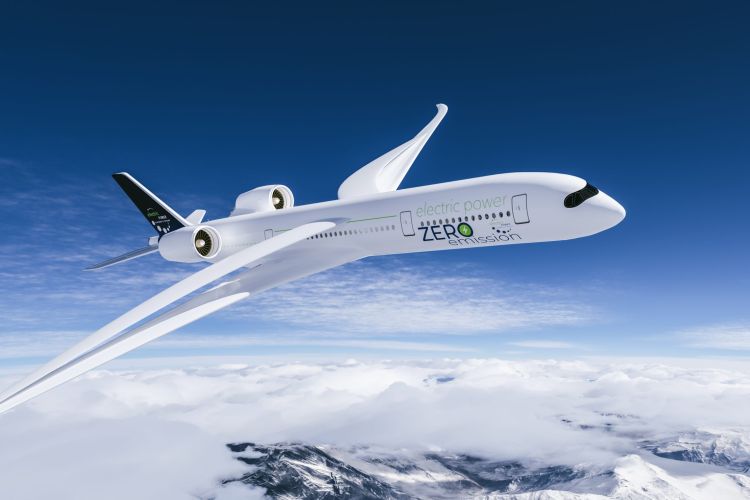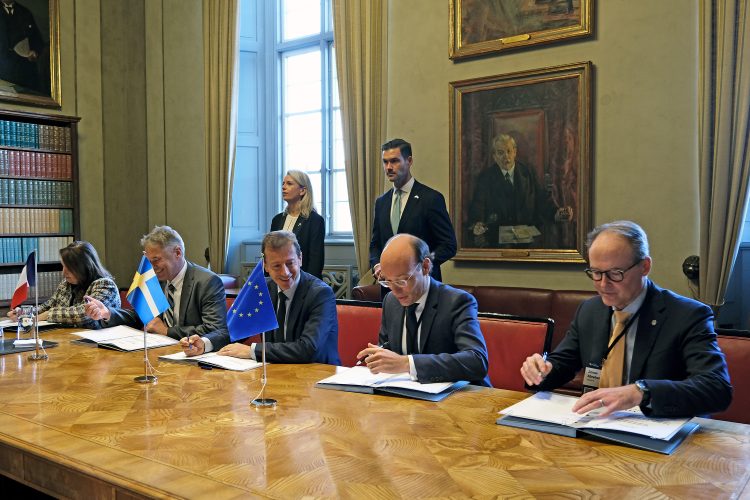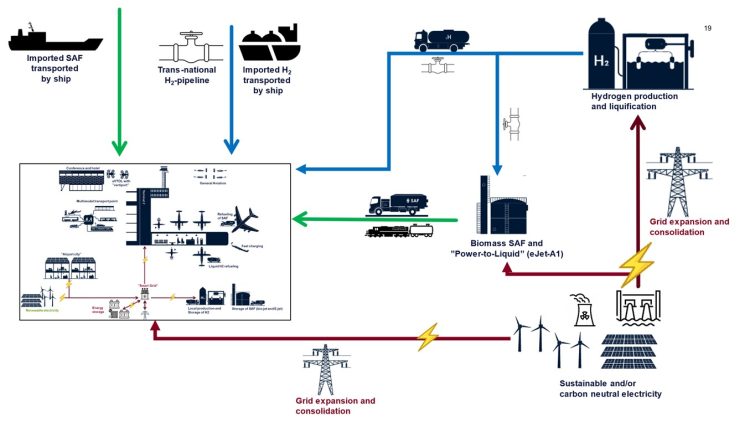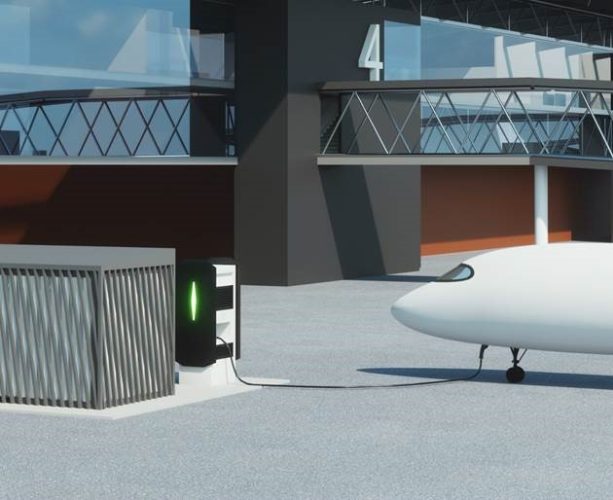Future ready: Swedavia’s drive for electric and hydrogen aviation
Posted: 14 April 2025 | Holly Miles | No comments yet
Editor, Holly Miles, joined John Nilsson, Strategic Planning Manager for Electric and Hydrogen Aircraft Infrastructure at Swedavia to discuss the intricacies of hydrogen and electric aviation, as the airport operator strives to be an early adopter in this sustainable energy space.


Firstly, what makes Sweden and Scandinavia in general, good regions to be a first mover in the electric or hydrogen space?
Sweden is a large and sparsely populated country, so the need to be able to move by air transport is paramount for its economy. Fortunately, there’s also a need to transform the air industry into something more sustainable and there are a lot of forces at play in Sweden to move towards a more sustainable mode of transport. I do believe that aviation can be sustainable, especially if we use battery electric aviation and hydrogen aviation. Electric aviation has one advantage, namely, it is very energy efficient. So, on shorter trips, commuter trips, we see a possibility for battery electric aviation to play a role in the transport modes of Swedish citizens.
Where are you on your journey to enabling electric and hydrogen powered flights at Swedavia’s airports?
At Swedavia, we had the ambitious target of becoming net zero on our own operations, and we reached that in 2020. The next step for us is to make sure that the whole aviation industry also reaches net zero. So, we have partnered with many different stakeholders, both from academia, from research institutes and from the private sector, to push forward the knowledge base when it comes to electric and hydrogen aviation. We have also carried out numerous feasibility studies on our airports and invested in small electric chargers for two-seater electric aviation at Östersund Airport and Visby Airport. We are also in the process of securing the power for a stand at Stockholm Arlanda Airport that will be integrated in 2026. The only thing that’s missing there is a charging station. Since the standardisation of the charging station is not yet set, the mega-charging system, we’re unable to purchase that right now. But, we are preparing the rest in readiness for when those charging stations exist.
The ultimate goal for the airline industry in Sweden, is to be fossil-free for domestic operations by 2030″
Aside from that, we’re also looking at hydrogen aviation aircraft and we are preparing the plans for future hydrogen aviation at our airports. This consists of trying to understand where will we get the hydrogen from: do we need to produce it on site or close to the airports? and the transport and logistics of getting hydrogen to our airports. We have 10 airports in Swedavia, all different in nature, each with different needs, so we’re trying to understand the subtleties of the hydrogen ecosystem for every airport that we have. We also have an ambitious target to prepare all 10 airports for battery electric aviation when it’s commercially available.
And what are your key milestones?
The first milestone, of course, is to be able to invest in battery electric aircraft charging infrastructure at Visby and Östersund. But our main milestones right now, are to understand the different scenarios that we have for charging electric batteries together with, for example, Heart Aerospace and Research Institute of Sweden, amongst others. We have done quite a few studies on the preferred mode of charging, depending on the airport, depending on the electric grid and depending on the needs of the aircraft for short, fast charging of 30 minutes or less. Our power demand is quite big. So, we’re looking at different ways of coping with that, either with energy storage at the airport or with a mobile charging unit. We are really pushing for the industry to develop this mobile charging unit in the future, to allow us flexibility at our airports.
What challenges do you face in this journey?
I think the largest challenge that we have as an airport operator is to pinpoint and understand the future, to understand the different proportions of electric aviation, hydrogen electric aviation, so we can plan accordingly. And once we’ve better understood the future scenarios for those different types of aviation, it comes to the planning of the ecosystem, of the infrastructure ecosystem of the airports. In terms of battery electric aviation, we need to understand the number of aircraft that we’ll have to turn around at the same time so we can cope with the power demand and plan accordingly. For hydrogen aircraft, we need to understand the volumes of hydrogen needed so we can work together with other stakeholders in the energy sector. For example, to ensure that the hydrogen needed is provided at the airport and that we, as an airport operator, also have the infrastructure in place for the storage of liquid hydrogen or maybe even liquefying electric hydrogen at the airports, especially for Stockholm-Arlanda Airport and Gothenburg-Landvetter Airport when we possibly see a higher demand on hydrogen in the future.
How do you manage the risks associated with these new technologies, both in terms of safety and operational viability?
Of course, safety is paramount and we’re always going to keep the highest safety standards at Swedavia’s airports. So together, once again with the other stakeholders and the many projects that we have, we are looking at the risks associated with hydrogen and how to mitigate them. Hydrogen is a known product in the industry and there’s a lot of regulation around hydrogen and the handling of hydrogen. We would like to incorporate them in airport infrastructure and airport operational infrastructure, make sure that it’s adapted and there are no safety concerns with hydrogen.
With electric aviation, we need to have high safety standards when dealing with very high power, particularly the safety of handling very high electric voltages. We also need to ensure that these voltages do not interfere with the rest of the airport equipment.
When it comes to operational investments, thankfully Swedavia is in a great position with the projects that we have, with the partnership with Airbus, for example, together with Vattenfall, Avinor and Scandinavian Airlines or with the Baltic Sea Region Hydrogen Airport Projects that we have together with many stakeholders around the Baltics. Trying to understand which part of the value chain will be owned by which actor and how to have a flexible approach when it comes to building infrastructure will be key so we can easily ramp up and ramp down depending on the market outlook. The same is valid for electric aircraft. We had lots of feasibility studies done on the best approach for infrastructure and how to keep it flexible and where, as an airport operator, we should take responsibility for the infrastructure.
What are your ultimate goals around electric and hydrogen flights?
Well, the ultimate goal for the airline industry in Sweden, is to be fossil-free for domestic operations by 2030, and hydrogen and especially electric aviation will play a large role in that. By 2045, all aircraft departing from Sweden should be fossil-free. There we see that hydrogen and electricity will also play a large role, especially hydrogen, in the medium-haul traffic from Sweden and hopefully electric for the shorter-haul traffic, depending on the evolution of battery capacity in the future. We really do envisage electricity and hydrogen playing a large role in de
Heart Aerospace ES-30™. Credit: Heart Aerospace
How is Swedavia addressing community concerns or feedback related to these sustainable technology changes?
At all our 10 airports, we have continuous feedback and discussions with our surrounding stakeholders and inhabitants around the airports, and we are informing them of the future steps that their airports will have. We keep that dialogue with all the stakeholders around the airports. I do believe that battery electric and hydrogen aircraft is seen as a positive step towards decarbonising the aviation industry and most of our stakeholders and the population around the airports are looking favourably towards electric and hydrogen aviation.
Does it address the noise concerns for the community? Are electric planes less noisy than conventional planes?
We hope so. That’s what we’ve heard from our partners working with electric aviation, so that would certainly be a favourable aspect of this energy form.
What economic opportunities do you see arising from the early adoption of electric and hydrogen aircraft infrastructure?
We are still investigating the opportunities that are possible with being early adopters, but the non-economical side of it is also to show that we can beat fly-shaming and that we can actually fly without polluting the environment. That is an opportunity for Swedavia, and also a necessity for us to survive in the future.
Are there specific industry partnerships or collaborations that have been particularly instrumental in advancing your strategy?
As I mentioned before, our partnership together with Airbus, SAS, Vattenfall and Avinor is of great importance to understanding a larger ecosystem for hydrogen aviation, as well as our partnership with the Baltic airports and the Baltic Sea Region Hydrogen Airport project. And for electricity, the tight collaboration that we have with Heart Aerospace and with the RISE Research Institute of Sweden has helped us to understand the future and start to plan according to the necessities of the future airports.


In January 2024, Swedavia, Airbus, Avinor, SAS and Vattenfall signed a Memorandum of understanding (MoU) to work together to develop infrastructure for hydrogen aviation at airports in Sweden and Norway. Credit: Swedavia.
Finally, what are your top tips for other airport leaders who are looking to take the first steps in this journey? What can they learn from a first mover such as yourself?
Don’t be afraid to collaborate across borders with energy companies, and with other airports. It’s important to be able to collaborate, to be open-minded, and to share the information that you have gathered because we won’t be able to do this alone. We need to have large collaboration across the stakeholders in the aviation industry and outside of the aviation industry to be able to produce the energy that we need for decarbonising aviation history.
About the interviewee
John Nilsson is the Strategic Planning Manager Electric and Hydrogen Aircraft Infrastructure at Swedavia.
Join our free webinar: Beyond silos: How ecosystem thinking elevates the airport experience
In today’s complex aviation landscape, airports are moving beyond siloed operations to embrace a new era of collaboration. This webinar focuses on how leading airports are using ecosystem thinking to adapt, personalize, and continuously improve every touchpoint, boosting both passenger satisfaction and non-aeronautical revenue.
Date: 13 Nov | Time: 10:00 GMT
REGISTER NOW TO SECURE YOUR SPOT
Can’t attend live? No worries – register to receive the recording post-event.
Related topics
Airlines, Airport development, Airside operations, Green energy, Hydrogen, Innovation, Maintenance, New technologies, Safety, Sustainability, Sustainable development
Related airports
Gothenburg Landvetter Airport, Östersund Airport, Stockholm Arlanda Airport, Visby Airport
Related airlines
Related organisations
Airbus, Avinor, Baltic Sea Region Hydrogen Airport Projects, European Commission (indirectly), Heart Aerospace, Research Institute of Sweden (RISE), Scandinavian Airlines (SAS), Swedavia, Vattenfall





















